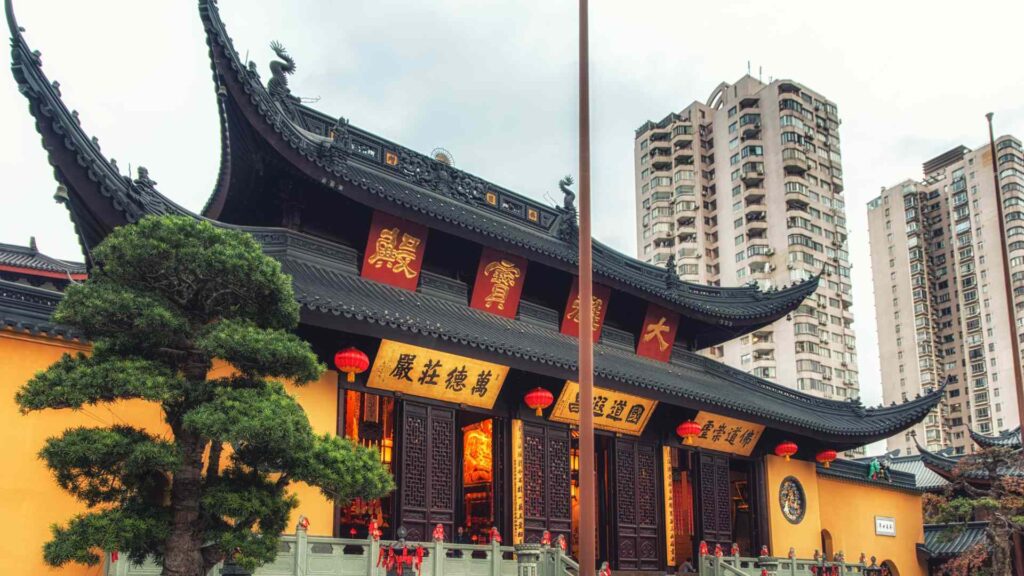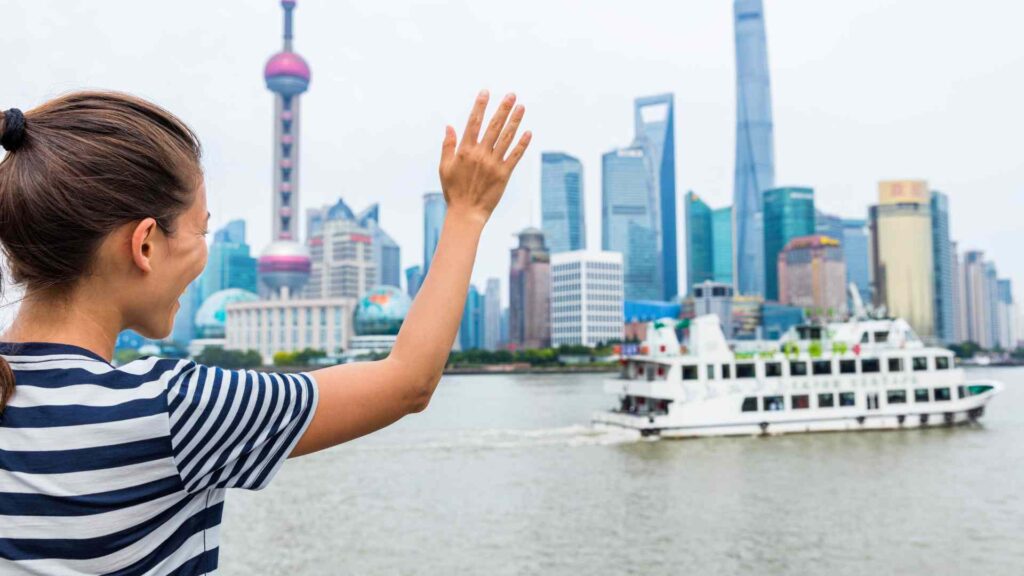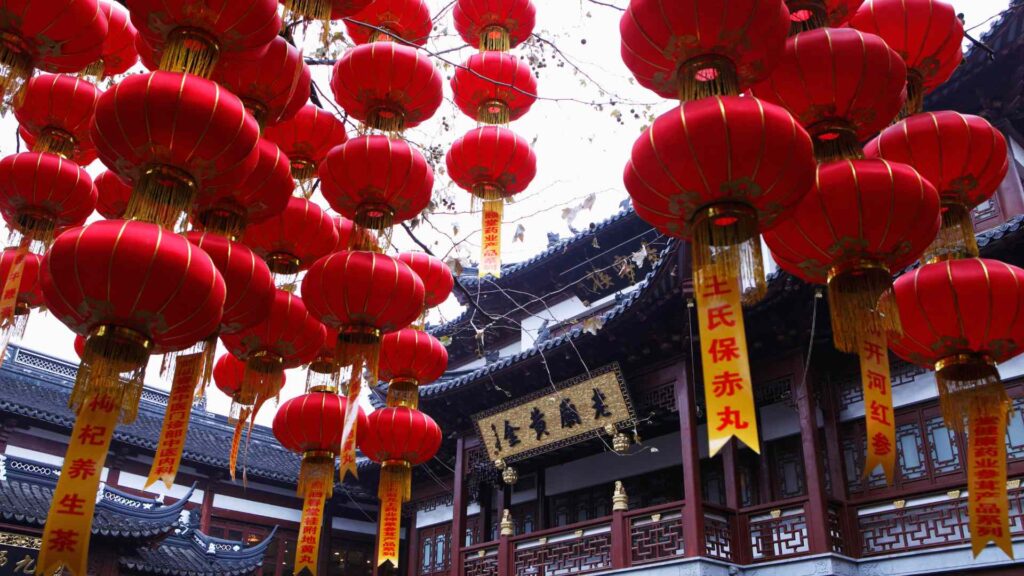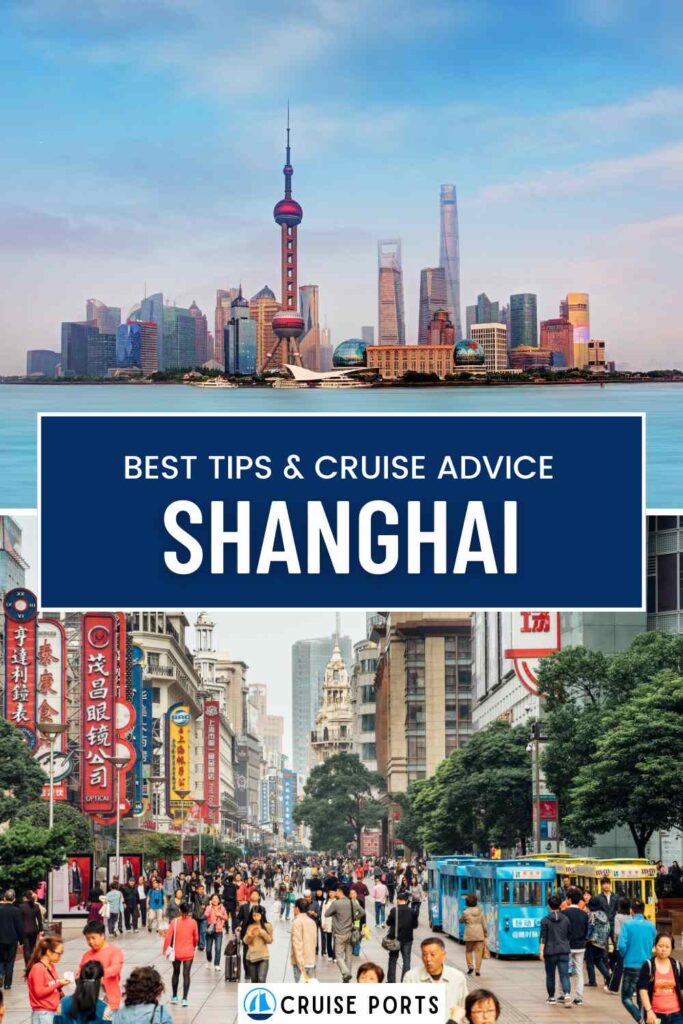Shanghai, one of the world’s most dynamic cities, has rapidly become a prime destination for global travelers, particularly those arriving by sea.
Whether you’re embarking on a cruise from Shanghai or visiting the city as a port of call, understanding the ins and outs of the Shanghai Cruise Port is essential.
Shanghai Cruise Port Overview
Shanghai is home to two primary cruise terminals: the Shanghai Port International Cruise Terminal (SIPG Cruise Terminal) and the Wusongkou International Cruise Terminal (Baoshan Cruise Terminal).
While both cater to international travelers, they serve slightly different purposes, with Wusongkou being the primary port for large ocean liners. Here’s a breakdown:
- Shanghai Port International Cruise Terminal (SIPG): Situated along the Huangpu River, in downtown Shanghai, this terminal is more convenient for those looking to explore the city’s iconic sites such as the Bund, Yu Garden, and Nanjing Road. It’s typically used for river cruises or smaller luxury liners.
- Wusongkou International Cruise Terminal (Baoshan): Located in the northern part of Shanghai, this terminal serves as the major hub for international cruise ships such as those from Royal Caribbean, Princess Cruises, and Costa Cruises. Despite being farther from the city center, it is well-equipped to handle a large number of passengers.
Knowing which port you’re arriving at or departing from is crucial for planning your logistics, as each has distinct features and transportation options.

Arriving at Shanghai Cruise Port
For many cruise passengers, arrival at Shanghai’s cruise ports will be the first experience of this bustling metropolis. Here’s what to expect:
- Shanghai Pudong International Airport (PVG): For international travelers, Pudong Airport is the most common point of arrival. It is approximately 40-50 km from both cruise terminals.
- Shanghai Hongqiao International Airport (SHA): Hongqiao Airport is closer to downtown, making it more convenient for travelers going to the SIPG Cruise Terminal. However, it is farther from Wusongkou.
- Transportation Options:
- Taxis: Available at both airports, taxis are a convenient, though more expensive option. Ensure you have the name of your terminal in Chinese to show the driver.
- Maglev Train: For those arriving at Pudong Airport, the Maglev is an ultra-fast train that connects to the city’s metro system. While it doesn’t go directly to the ports, it’s a fast way to get into the city and then transfer via metro or taxi.
- Private Transfers and Shuttle Buses: Many cruise lines offer shuttle services from the airport to the port. This can be an excellent hassle-free option, especially if you’re unfamiliar with Shanghai.
Checking In and Embarkation Process
The embarkation process at Shanghai’s cruise terminals is efficient, though it helps to be prepared. Here’s a step-by-step overview of what you can expect:
- Arrival at the Terminal: Be sure to arrive at least 2–3 hours before your scheduled departure. Both terminals feature luggage drop-off points where your baggage will be tagged and transferred directly to your cabin.
- Check-In Process: After passing through security, you’ll proceed to check-in counters. Make sure to have your passport, cruise documents, and any required visas (China requires a visa for most travelers unless covered by the transit visa exemption).
- Customs and Immigration: After check-in, you’ll clear customs and immigration. This can be time-consuming, particularly for international departures, so patience is key.
- Boarding the Ship: Once cleared, you’ll receive your cruise keycard, which acts as your cabin key and ID onboard. Follow signs and port staff instructions to board the ship, and enjoy exploring the amenities!
Transportation Between Cruise Terminals and City Center
Both Shanghai Cruise Port terminals are well-connected to the rest of the city, allowing easy exploration for those spending a day or more in the city.
- From SIPG Cruise Terminal:
- Metro: Line 12 of the Shanghai Metro is a 10-minute walk from the terminal, providing direct access to popular tourist areas like People’s Square and Nanjing Road.
- Taxi: Taxis are abundant at the terminal, and a trip to central areas like the Bund will take 15-20 minutes.
- Public Bus: Several public buses operate near the terminal, though they are often crowded, and navigating them without knowledge of Chinese can be challenging.
- From Wusongkou International Cruise Terminal:
- Metro: The nearest metro station, Baoyang Road (Line 3), is about 5 km from the port, requiring a taxi or bus to reach it. From there, you can take the metro to major city destinations.
- Taxi: Given the distance from central Shanghai, taxi rides can take 30-40 minutes to the Bund or other attractions. Ensure you have the destination written in Chinese.
- Shuttle Services: Some cruise lines provide shuttle buses from Wusongkou into the city center. Check with your cruise operator for details.

Exploring Shanghai During a Port Stop
If your cruise allows a day or two in Shanghai, you’ll want to maximize your time exploring the city. Here’s a selection of must-see sites and how to reach them from the cruise terminals:
- The Bund: This historic waterfront offers stunning views of the skyline and colonial architecture. From either terminal, it’s easily accessible by metro or taxi.
- Yu Garden: A beautiful classical Chinese garden located in the heart of the city. It’s close to the Bund and can be reached via taxi or metro.
- Shanghai Tower: The tallest building in Shanghai, offering breathtaking views of the city. Located in Pudong, it’s a short drive or metro ride from the Bund.
- Nanjing Road: One of the world’s busiest shopping streets, Nanjing Road is ideal for a quick shopping spree. It’s easily accessible from both terminals, particularly SIPG.
- Jade Buddha Temple: For those looking for a cultural and spiritual experience, this Buddhist temple is a serene escape from the city’s hustle and bustle.
Tips for Smooth Sailing at Shanghai Cruise Port
To ensure your experience at Shanghai’s cruise terminals is stress-free, keep the following tips in mind:
- Visa Requirements: China has strict visa policies, and most nationalities will need a visa to enter. However, Shanghai offers a 144-hour visa-free transit option if you’re staying under this timeframe and are continuing to a third country. Ensure your cruise qualifies for this exemption.
- Currency: The official currency in China is the Renminbi (RMB). While credit cards are widely accepted, it’s advisable to carry some cash for smaller purchases or taxi fares.
- Language: English is not widely spoken, so having the names of destinations written in Chinese will help immensely, particularly when dealing with taxis.
- Packing Essentials: Shanghai can experience extreme weather, with cold winters and hot, humid summers. Pack accordingly, and be prepared for rain, especially in the spring and summer months.
What to Do with Extra Time in Shanghai
If your cruise arrives in Shanghai early or you’re spending a day or two post-cruise, take advantage of these additional activities:
- Day Trip to Suzhou: Known as the “Venice of the East,” Suzhou is famous for its gardens and canals and is only a 30-minute high-speed train ride from Shanghai.
- Zhujiajiao Water Town: This ancient water town is located about an hour outside of Shanghai and is a perfect spot for experiencing traditional Chinese culture.
- Shanghai Disneyland: For family-friendly fun, spend a day at Shanghai Disneyland, located about an hour from downtown and easily accessible via metro or shuttle services.

Best Time to Cruise from Shanghai
Shanghai experiences four distinct seasons, so when you choose to visit can impact your cruise experience:
- Spring (March to May): Mild temperatures and blooming flowers make this the most pleasant time to visit.
- Summer (June to August): Summer can be hot and humid, with occasional rainstorms. However, it’s also a peak travel season, so expect larger crowds.
- Autumn (September to November): Like spring, autumn offers cooler weather and clear skies, making it another ideal time for cruising.
- Winter (December to February): While Shanghai’s winters are cold, they are relatively mild compared to northern China. Cruises still operate, but you’ll need to pack for chilly conditions.
Conclusion
Shanghai Cruise Port serves as a gateway to one of China’s most exciting cities, offering cruisers a perfect blend of history, culture, and modernity.
Whether you’re embarking on a voyage or simply visiting for a day, being well-prepared will enhance your experience, allowing you to make the most of your time in Shanghai.
FAQs
1. Do I need a visa to enter Shanghai if I’m on a cruise?
Most travelers will need a visa, but Shanghai offers a 144-hour visa-free transit policy for certain nationalities if you’re stopping in Shanghai en route to a third country.
2. How far is Wusongkou Cruise Terminal from downtown Shanghai?
Wusongkou International Cruise Terminal is about 30-40 minutes by taxi from central Shanghai, depending on traffic.
3. What is the best way to get from the cruise port to the city center?
Taxis are the most convenient option, though metro services are available at both terminals, with Wusongkou requiring a short bus or taxi ride to the nearest station.
4. Can I store luggage at the cruise terminals?
Most cruise terminals do not offer long-term luggage storage. It’s best to arrange storage at your hotel or through luggage storage services in the city.
5. What are some nearby attractions from SIPG Cruise Terminal?
The Bund, Nanjing Road, and Yu Garden are all located close to the SIPG Cruise Terminal and are easily accessible by taxi or metro.
6. Are there currency exchange services at the cruise terminals?
Yes, both terminals offer currency exchange services, but it’s advisable to exchange money beforehand or withdraw cash from an ATM for better rates.


